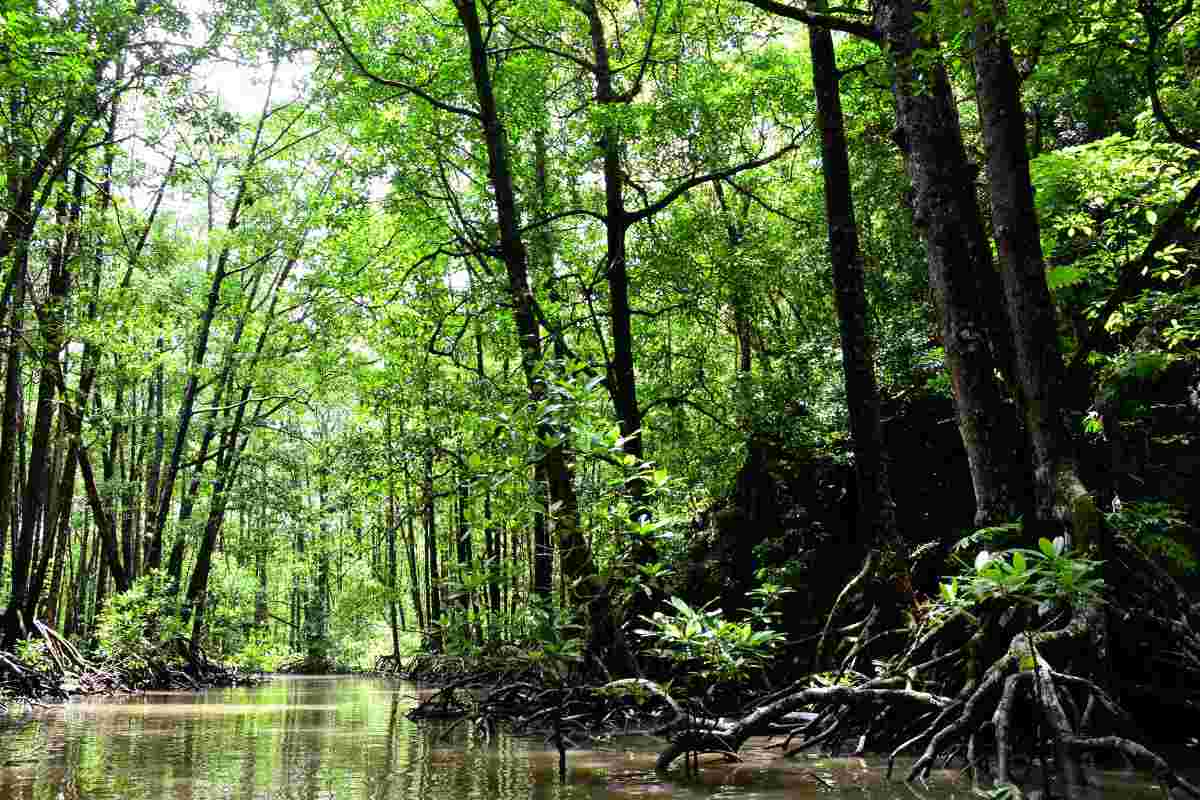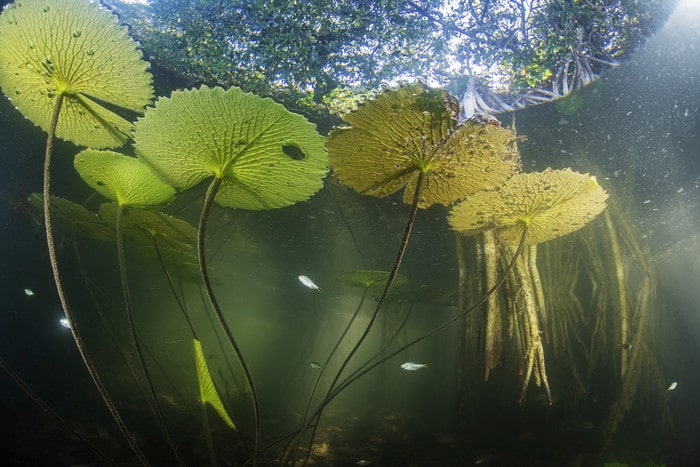
New research suggests it’s a 125,000-year-old living fossil!
Mangroves – salt-tolerant trees and shrubs – are usually located close to tropical and subtropical coasts. But a hidden mangrove forest, located deep in the heart of the Yucatán Peninsula, is an odd one out. The mangrove forest is more than 200 kilometers inland; a until recently unexplained phenomenon. But researchers in a new study now claim to have solved the mystery.
The mangrove forest
As mentioned, the lush red mangrove forest is located far from the coast, along the banks of the San Pedro River, which rises in the Petén Basin in northern Guatemala and flows into Mexico. Because it is known that red mangroves (Rhizophora mangle) Occurring only in saltwater, it’s a mystery how this particular mangrove forest thrives so deep inland, in freshwater. “Red mangroves really only exist in the ocean,” researcher Exequiel Ezcurra told Scientias.nl. “The seeds germinate in the mother plant and, once detached, they float through the seawater, where they are dispersed by coastal currents. For this reason, there are normally no red mangroves off the coast.”

Several fish find refuge in the sunken roots of the red mangrove forests along the banks of the San Pedro River. Image: Octavio Aburto
The big question is how this red mangrove forest on Yucatán ever came about. And genetic, geological and botanical research is now confirming what many locals and scientists already suspected: This forest was once a saltwater mangrove ecosystem. But during the last ice age, when oceans started to retreat, it stranded here, in this place.
Explanation
“During the last interglacial, which happened about 125,000 years ago, it was extremely hot,” explains Ezcurra. “As a result, ice caps and glaciers melted, causing the sea level to be about six to nine meters higher than it is today. Most of the tropical lowlands and the Yucatán Peninsula were submerged and the ocean reached the San Pedro River. Because of this, mangrove seeds colonized the riverbanks. About 115,000 years ago, the last ice age began in which ice sheets re-formed. Sea levels fell again as more water was stored in glaciers and the coasts receded. And the San Pedro mangroves were left in this place.”
Living fossil
It means that the mangrove forest is actually a living fossil; the forest dates back to an earlier time and has miraculously survived the major environmental changes that have taken place since then. In fact, the forest has been stuck in time for over 100,000 years. “This discovery is important because it provides a scientific explanation for a puzzling paradox, namely the presence of oceanic plants deep in the heart of a tropical rainforest,” says Ezcurra. “It opens new doors for researchers, as the DNA of these plants gives us a ‘genetic glimpse’ into the tropical coastal plants of about 125,000 years ago.”
Glimpse of the future
On the one hand, the mangroves of the San Pedro River provide us with important information about the ecological history of the tropical lowland over the last 150,000 years. “They underline the dynamic changes Earth went through during the Pleistocene,” Ezcurra clarifies. But that’s not all. The study also gives us a glimpse of the future. Sea levels are currently rising again. And the findings show that just a small change in sea level can have a dramatic effect inland. “The study tells us the fate of tropical lowlands as the climate is changing at a rapid pace,” Ezcurra said. “The fact that these lowlands were completely submerged during the interglacial period paints a sobering picture of how present-day coasts will fare in the near future.”
Threat
Although the researcher does not think that climate change will pose a major threat to the red mangrove forest, it does face other challenges. “It is seriously threatened by tropical deforestation and human development,” Ezcurra says. “That is our main concern.” The researcher notes that the region around the research sites was systematically deforested in the 1970s due to a misleading development plan. The banks of the San Pedro River were only spared because the bulldozers couldn’t reach them. The area is still under threat from human activities. And so the researchers emphasize the need to protect this biologically important area.
“The story of the Pleistocene glacial cycles is written in the DNA of these plants, which has yet to be deciphered by scientists,” the researchers said. But even more importantly, the team says, the San Pedro mangroves are actually warning us of the dramatic impact climate change could have on the coastal plains of the Gulf of Mexico if we don’t take urgent action to curb our greenhouse gas emissions. screws.
Source material:
“Hidden Mangrove Forest in the Yucatan Peninsula Reveals Ancient Sea Levels” – University of California – San Diego
Interview with Exequiel Ezcurra
Image at the top of this article: Jay Park via Pixabay